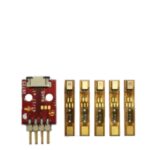Since the initial market introduction of microelectromechanical systems (MEMS) products from pressure sensors to accelerometers to more recent gas sensors and several others, users and potential users have been attracted to the technology for many reasons. This includes its incredibly small size, low weight, low power consumption and low cost – especially as high-volume manufacturing became readily available. Technology commercialization and market adaption were not without shortcomings/problems and delays until full commercialization was achieved.
The MEMS Industry Commercialization Report Card was among the first industry tools to explore and analyze the progress and limitation of sensors and MEMS actuators. Initiated in 1998, the current one marks the 24th continuous year of reporting.
This year’s responses document a dramatic decline in grades of 13 of the 14 subjects – the critical success factors. Subject Built Infrastructure declined two grades from B+ to B- and the overall grade dropped from its previous B- over the past six years to C+. This is its all-time lowest grade over the 24 years of publication! These and other comments form experts who contributed to the Delphi style report are in many respects due to the COVID pandemic – but not entirely.
The creator of the report card, Roger Grace of Roger Grace Associates, says, “Smart design engineers are not looking for MEMS. They want a product that satisfied their design criteria.”
As identified in the Sensor Product Life Cycles chart in the report card, within the past few years printed flexible/paper sensors and function fabrics are being added to options that designers have for some applications that provide fresh competition for MEMS.
For example, consider a measurement made at each foot. For many years, adding MEMS sensors to the soles or inserts of shoes has been implemented to provide pressure and force measurements. Today, as an alternative to MEMS, textile-based sensors in wearable socks can provide similar measurements and easily provide distributed force data as well.
To obtain a copy of 30-page 2021 MEMS Industry Commercialization Report Card Final Report, click here.



